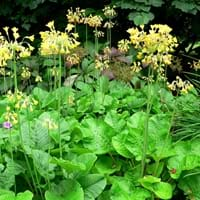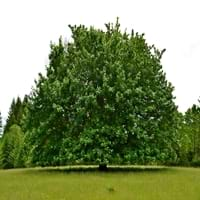Life Span
Perennial
Perennial
Origin
Eastern Europe, Southern Europe, Russia/Siberia, Southern Asia, Western Asia
Western United States, Northwestern United States, California, Canada
Types
Not available
Black Maple, Mountain Maple,
Norway Maple
Habitat
Roadsides, sand dunes, Waste areas
Riverbanks, Stream side
USDA Hardiness Zone
6-9
5-9
Sunset Zone
1a, 1b, 2a, 2b, 3a, 3b, 4, 5, 6, 7, 8, 9, 14, 15, 16
4, 5, 6, 7, 8, 9, 10, 11, 12, 13, 14, 15, 16, 17
Habit
Oval or Rounded
Oval or Rounded
Flower Color
Pink, Hot Pink, Rose
Yellow, Red, Green
Flower Color Modifier
Bicolor
Bicolor
Fruit Color
Yellow, Yellow green, Pink, Dark Red
Yellow, Red, Green, Sandy Brown
Leaf Color in Spring
Green
Light Green, Yellow green
Leaf Color in Summer
Green
Green
Leaf Color in Fall
Green, Light Yellow, Brown
Gold
Leaf Color in Winter
Light Green
Not Available
Leaf Shape
Oblong
Irregular
Plant Season
Summer
Spring, Summer, Fall
Sunlight
Full Sun, Partial Sun
Partial Sun, Partial shade
Type of Soil
Loam, Sand
Clay, Loam, Sand
The pH of Soil
Acidic, Neutral, Alkaline
Acidic, Neutral, Alkaline
Soil Drainage
Well drained
Average
Bloom Time
Early Summer, Summer, Late Summer
Early Spring, Spring
Tolerances
Drought
Not Available
Where to Plant?
Container, Ground, Pot
Ground
How to Plant?
Divison, Seedlings, Stem Planting
Seedlings
Plant Maintenance
Low
Medium
Watering Requirements
Average Water Needs, Do Not over Water, Never Over-water, Requires regular watering, Water more in summer
Do not let dry out between waterings, Keep ground moist, Requires regular watering
In Summer
Lots of watering
Lots of watering
In Spring
Moderate
Moderate
In Winter
Average Water
Average Water
Soil pH
Acidic, Neutral
Acidic, Neutral, Alkaline
Soil Type
Loam, Sand
Clay, Loam, Sand
Soil Drainage Capacity
Well drained
Average
Sun Exposure
Full Sun, Partial Sun, Partial shade
Partial Sun, Partial shade
Pruning
Remove damaged leaves, Remove dead branches, Remove dead leaves
Remove branches, Remove damaged leaves, Remove dead branches, Remove dead leaves, Remove dead or diseased plant parts
Fertilizers
All-Purpose Liquid Fertilizer, fertilize in growing season
All-Purpose Liquid Fertilizer, Nitrogen
Pests and Diseases
Slugs, Snails
Red blotch
Plant Tolerance
Variety of soil types
Not Available
Flower Petal Number
Single
Single
Foliage Texture
Medium
Coarse
Foliage Sheen
Matte
Matte
Attracts
Not Available
Bees, Birds, Flying insects, Insects
Allergy
Abdominal pain, Constipation, Diarrhea, Skin irritation
Pollen
Aesthetic Uses
Beautification, Borders, Landscape Designing, Showy Purposes
Not Used For Aesthetic Purpose
Beauty Benefits
Good for skin, Making cosmetics, Stops hair loss
Improve hair condition
Environmental Uses
Air purification, Food for insects, Versatility
Air purification, Nesting sites for birds, Shadow Tree, Wildlife
Medicinal Uses
Eczema
Tonic, tuberculosis
Part of Plant Used
Root
Flowers, Sap, Tree trunks
Other Uses
Decoration Purposes, Medicinal oil, Showy Purposes, Used as Ornamental plant, Used for its medicinal properties
Application in Furniture, Basketary, Can be made into a herbal tea, Decorative veneers, flooring, paneling, Edible syrup, Fibre, Making piano frames, Used as firewood, Used as fuel, Used in salads
Used As Indoor Plant
Yes
No
Used As Outdoor Plant
Yes
Yes
Garden Design
Edging, Feature Plant, Groundcover, Mixed Border
Feature Plant, Shade Trees
Botanical Name
MALUS domestica 'Pink Pearl'
ACER macrophyllum
Common Name
Apple, Eating Apple, Pink Pearl Apple
Big-leaf Maple, Oregon Maple, Pacific Maple
In Hindi
Tibetan cowslip
बड़ा पत्ता मेपल के पेड़
In German
Tibet-Primel
Big Blatt Ahornbaum
In French
Kauslip tibétain
Grande feuille Érable
In Spanish
Primula florindae
Gran hoja del árbol de arce
In Greek
Primula florindae
δέντρο Maple μεγάλο φύλλο
In Portuguese
cowslip tibetana
Árvore de bordo Folha grande
In Polish
tybetański cowslip
Duży liść klonowy
In Latin
Primula florindae
Big Maple folia ligni
Phylum
Magnoliophyta
Magnoliophyta
Class
Magnoliopsida
Magnoliopsida
Order
Myrtales
Sapindales
Family
Onagraceae
Aceraceae
Clade
Angiosperms, Eudicots, Rosids
Angiosperms, Eudicots, Rosids
Tribe
Onagreae
Not Available
Subfamily
Onagroideae
Not Available
Importance of Tibetan cowslip and Big leaf Maple
Want to have the most appropriate plant for your garden? You might want to know the importance of Tibetan cowslip and Big leaf Maple. Basically, these two plants vary in many aspects. Compare Tibetan cowslip and Big leaf Maple as they differ in many characteristics such as their life, care, benefits, facts, etc. Every gardener must at least have the slightest clue about the plants he wants to plant in his garden. Compare their benefits, which differ in many ways like facts and uses. The medicinal use of Tibetan cowslip is Eczema whereas of Big leaf Maple is Tonic and tuberculosis. Tibetan cowslip has beauty benefits as follows: Good for skin, Making cosmetics and Stops hair loss while Big leaf Maple has beauty benefits as follows: Good for skin, Making cosmetics and Stops hair loss.
Compare Facts of Tibetan cowslip vs Big leaf Maple
How to choose the best garden plant for your garden depending upon its facts? Here garden plant comparison will help you to solve this query. Compare the facts of Tibetan cowslip vs Big leaf Maple and know which one to choose. As garden plants have benefits and other uses, allergy is also a major drawback of plants for some people. Allergic reactions of Tibetan cowslip are Abdominal pain, Constipation, Diarrhea and Skin irritation whereas of Big leaf Maple have Pollen respectively. Having a fruit bearing plant in your garden can be a plus point of your garden. Tibetan cowslip has showy fruits and Big leaf Maple has no showy fruits. Also Tibetan cowslip is not flowering and Big leaf Maple is flowering. You can compare Tibetan cowslip and Big leaf Maple facts and facts of other plants too.





